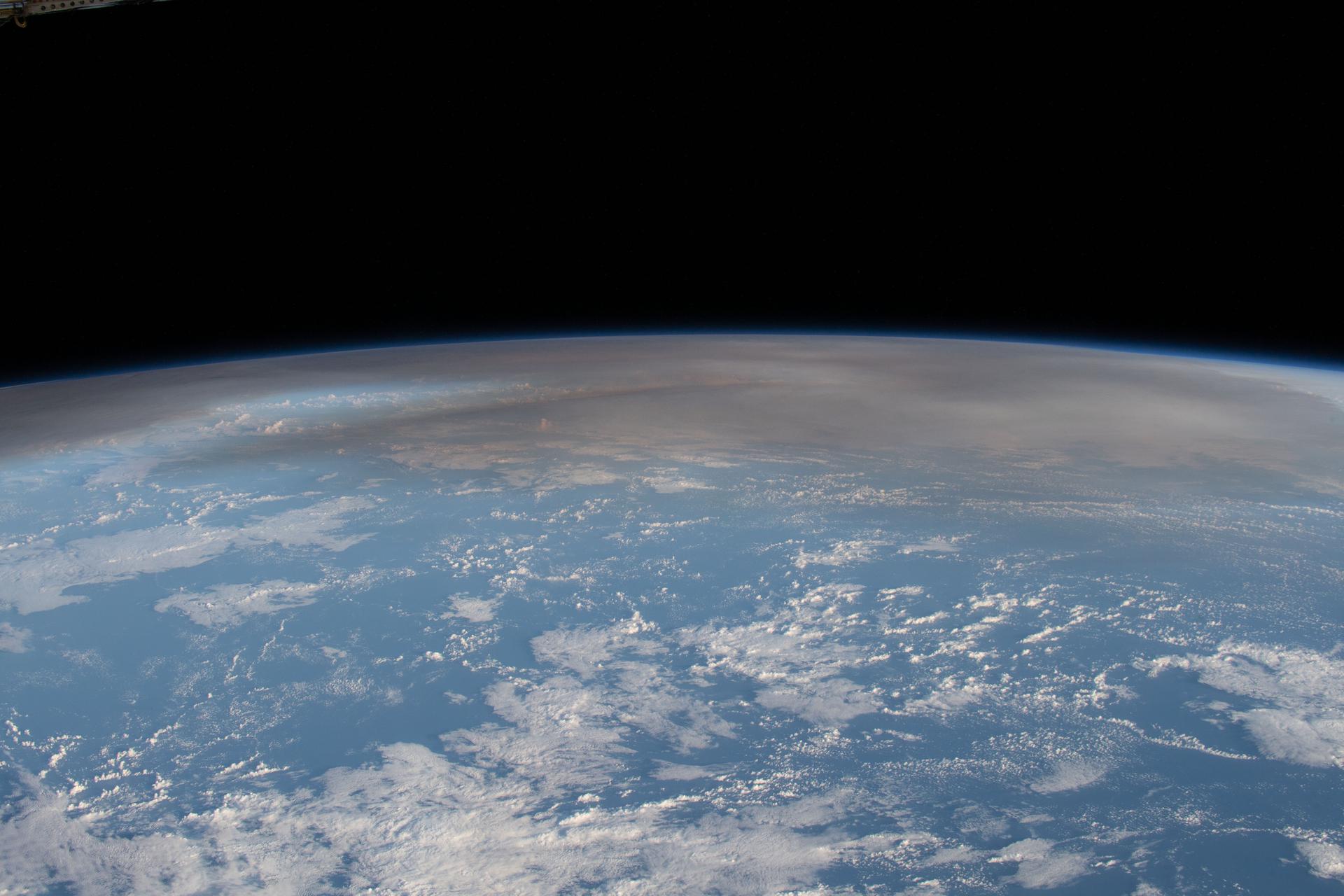
In January 2022, the islands of Hunga Tonga and Hunga Ha’apai, 65 kilometers north of Tonga’s main island of Tongatapu, disappeared below the sea surface in a cataclysmic eruption.
The submarine volcano, which rises from the seafloor 2,000 meters below, is part of the Tonga–Kermadec volcanic arc, a subduction zone extending from New Zealand to Fiji in the southwest Pacific. The region has a long history of volcanism. In fact, the two small islands were conjoined by an ash deposit from a previous eruption in 2015. But the 2022 eruption dwarfed all others in Hunga Tonga-Hunga Ha’apai’s recorded history.
On January 15, 2022, after weeks of activity including some smaller emissions of ash and smoke, the volcano erupted explosively, emitting a colossal plume into the stratosphere. The powerful eruptive blast triggered a Pacific-wide tsunami with waves up to 15 meters high and an atmospheric shockwave that circled the globe multiple times, producing a sonic boom more than 9,300 kilometers away in Alaska. The plume of ash, gas, rock, and water was visible from space and captured by earth-observing satellites.
Since then, scientists have been unraveling both the short- and long-term impacts of the eruption, which range from the depths of the seafloor to the ionosphere. Researchers from LASP will be presenting the results of recent studies at the December 12-16 meeting of the American Geophysical Union in Chicago.
LASP atmospheric scientist Yunqian Zhu investigated the vast amount of water that was injected into the atmosphere. In the satellite record, the water plume from Hunga Tonga-Hunga Ha’apai was unprecedented in both volume and height. Zhu and her colleagues found that while the eruption injected a relatively small amount of sulfur dioxide into the atmosphere, the immense volume of water disrupted the formation of aerosols in the stratosphere.
Using a climate model that reproduced the observed water vapor pressures seen after the eruption, the team found the eruption greatly enhanced aerosol surface area and water vapor near the polar vortex. This suggests the eruption had continuing impacts to the climate system, the team reported in their recent paper, Perturbations in stratospheric aerosol evolution due to the water-rich plume of the 2022 Hunga-Tonga eruption, which was published in the Nature journal Communications Earth & Environment in October 2022.
“This is the first model that simulates this elevated water vapor and investigates its impact on stratospheric sulfur chemistry, aerosol formation, and ozone chemistry,” said Zhu. “It explains how so much water can stay in the stratosphere for such a long period of time; why large amounts of sulfate aerosol are observed right after the eruption; and why a small amount of sulfur dioxide injection can lead to such a large persistent volcanic cloud.”
Another impact of the eruption was the disruption and disturbance of Earth’s geomagnetic field. LASP geophysicist Neesha Schnepf investigated the magnetic signature of the eruption in a first-of-its-kind study.
Schnepf and their colleagues analyzed signals that arrived at several Pacific Ocean geomagnetic observatories to determine whether they were local to a given observatory or concurrent at multiple stations. The most intense magnetic disturbances were found at the station closest to the eruption, the team reported in a recent paper, Magnetic Signatures of the 15 January 2022 Hunga Tonga–Hunga Ha’apai Volcanic Eruption, published in the AGU journal Geophysical Research Letters in May 2022.
It has been known since the 1830s that salty water traveling through Earth’s background magnetic field induces electric currents and secondary electromagnetic fields. It is well-known that earthquakes can induce both atmospheric and ionospheric signals, and that tsunamis can generate magnetic signals. Previous studies have also examined magnetic disturbances from volcanic eruptions. However, this is the first study of marine electromagnetic signals caused by a submarine volcanic eruption.
“Our results at Western Samoa match magnetic anomalies seen in a previous study of acoustic resonance between the ground and ionosphere after an earthquake—this is the first time a similar signal has been seen after a submarine volcanic eruption,” said Schnepf. “We also saw long-period magnetic signals at Easter Island that are unlike anything ever seen before from an earthquake or tsunami. We’re excited to continue investigating whether these magnetic signals are due to ionospheric waves traveling around the Earth for hours after the eruption.”
Both scientists will present their latest research results on the afternoon of Wednesday, December 14, 2022, at the American Geophysical Union’s fall meeting at the McCormick Place Convention Center in Chicago. Times are Central Standard Time.
2022 Hunga-Tonga eruption: stratospheric aerosol evolution in a water-rich plume (invited)
Yunqian Zhu, LASP
Wed. Dec. 14, 4:45-5:00pm CST | Room S102cd (McCormick Place South, Level 1) | V36A-01
Magnetic Signatures of the January 15, 2022, Hunga Tonga-Hunga Ha’apai Volcanic Eruption
Neesha Schnepf, LASP
Wed. Dec. 14, 5:50-6:00pm CST | Room S102cd (McCormick Place South, Level 1) | V36A-07
Media contacts:
Terri Cook, terri.cook@lasp.colorado.edu, +1 (303) 817-0443
Sara Pratt, sara.pratt@lasp.colorado.edu, +1 (303) 735-661



